MSRP (*Base Edition)
Hybrid REEV | SUV | 212KM
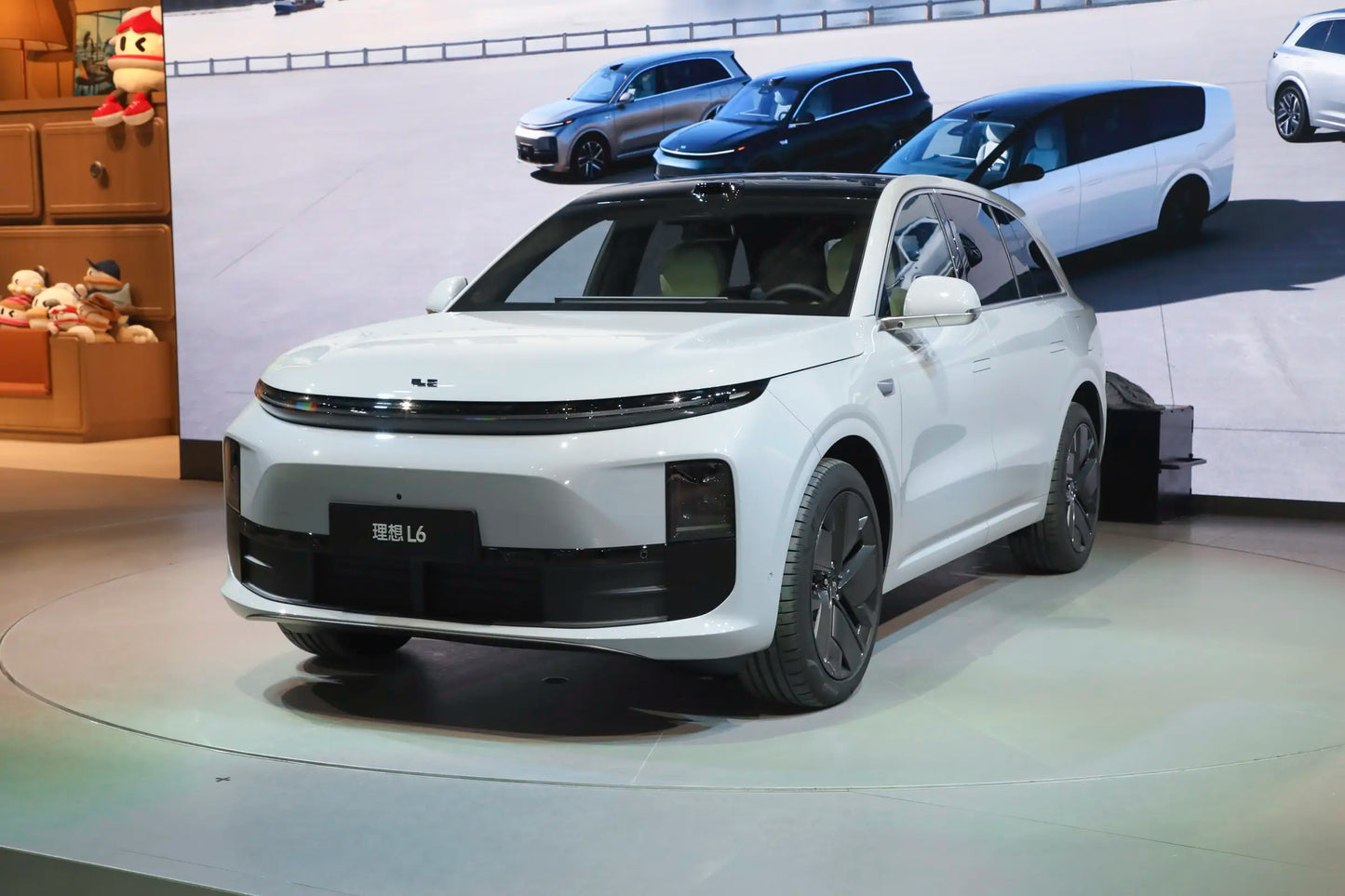
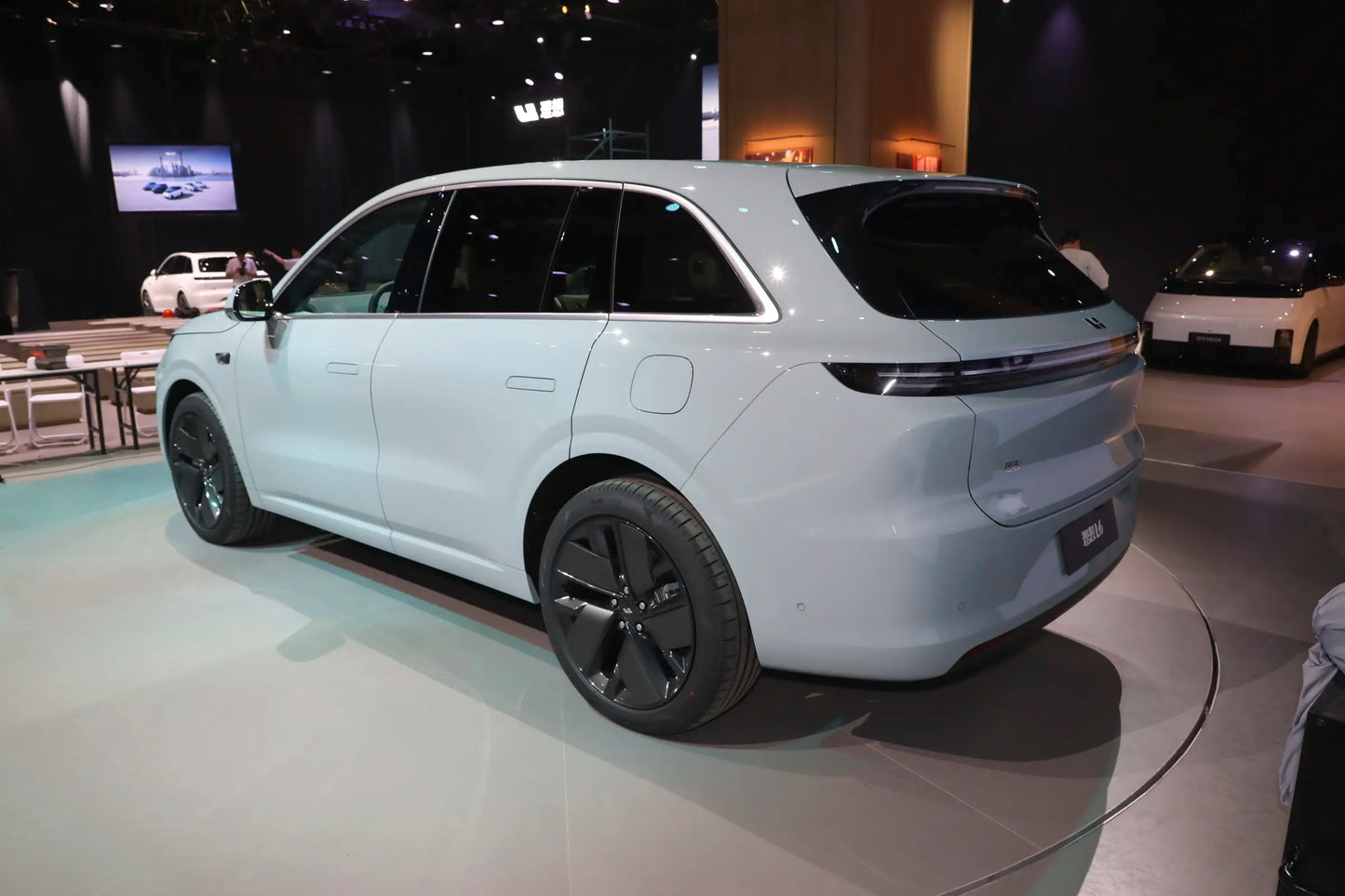
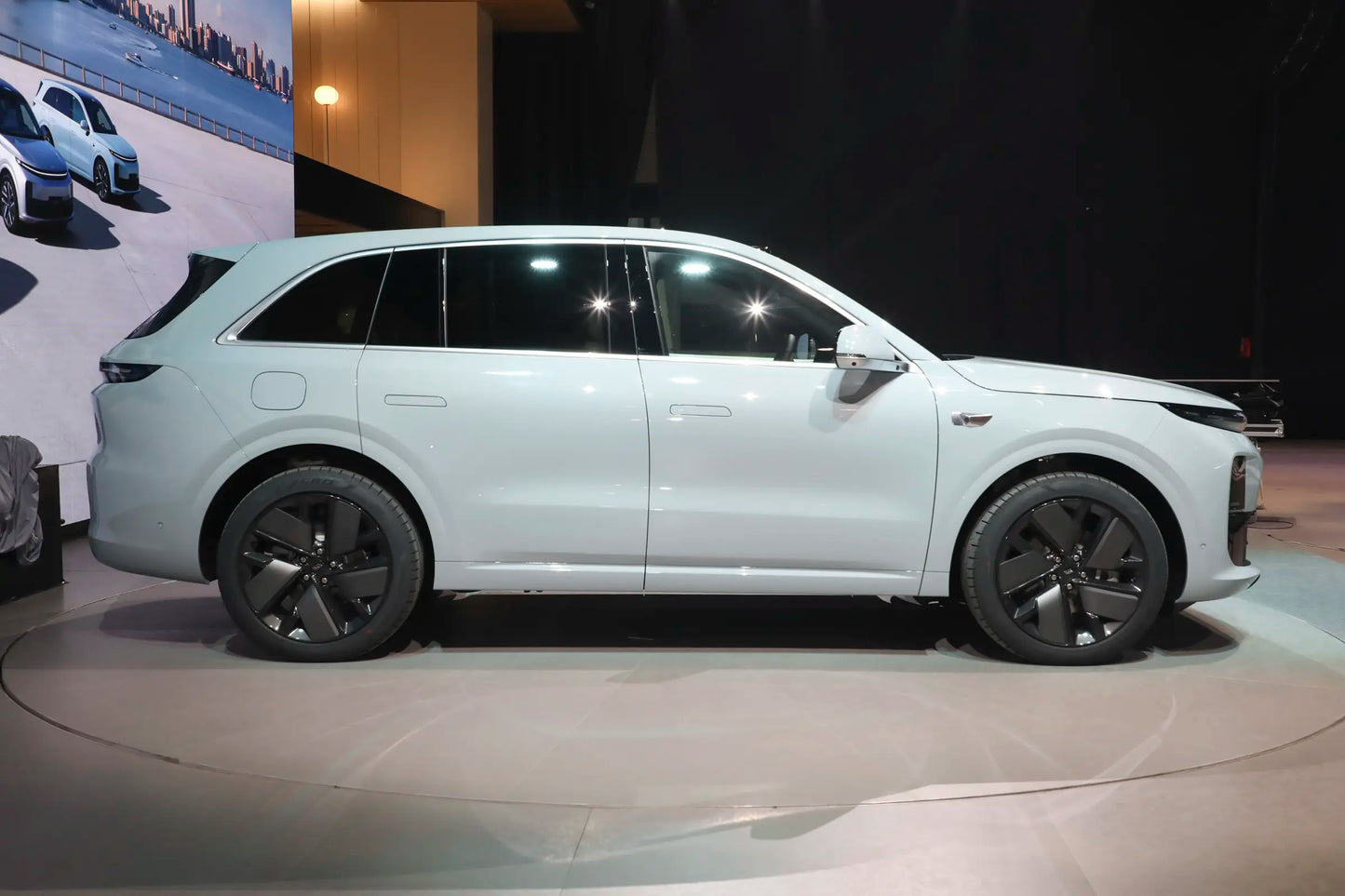
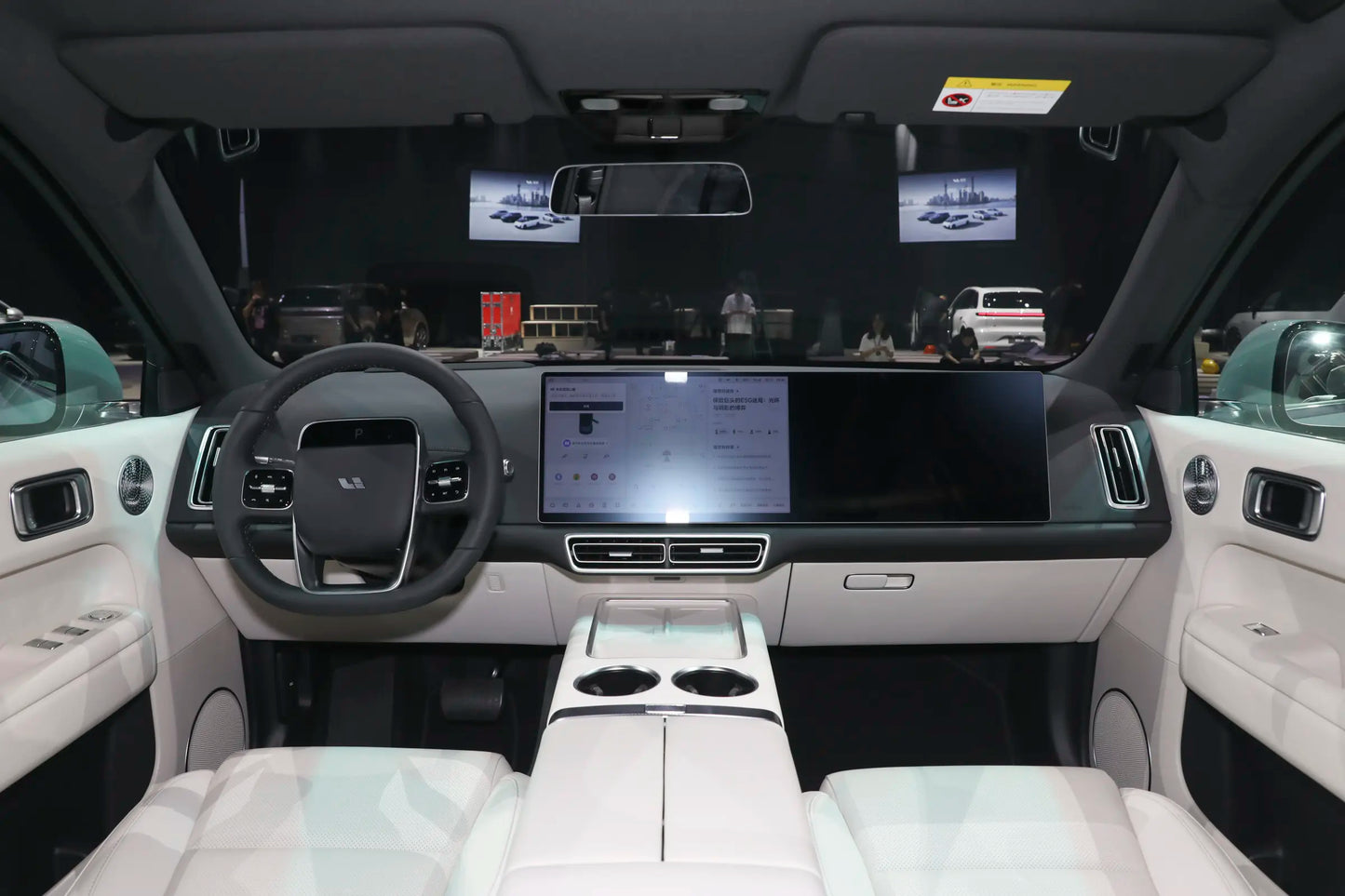
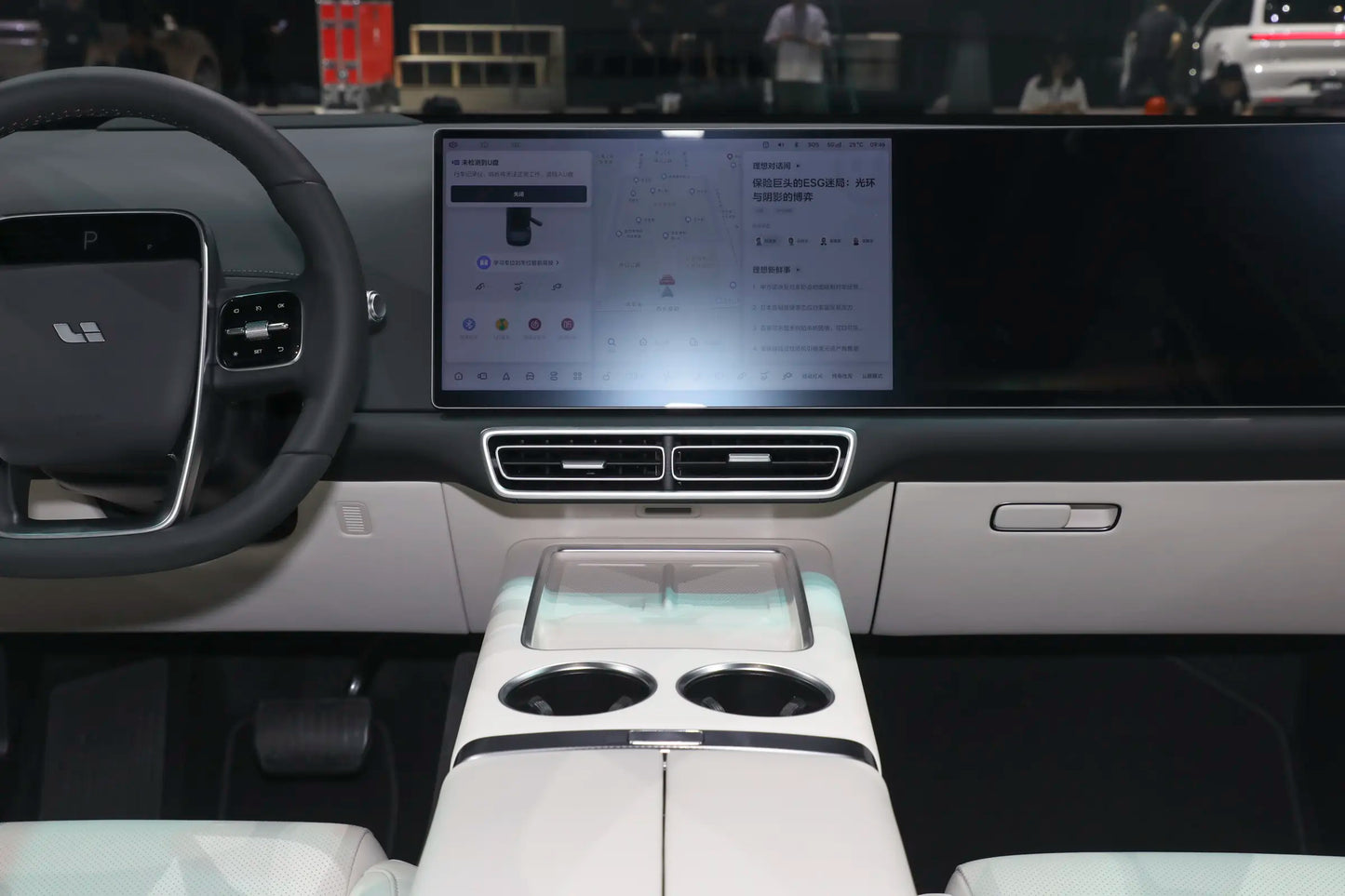
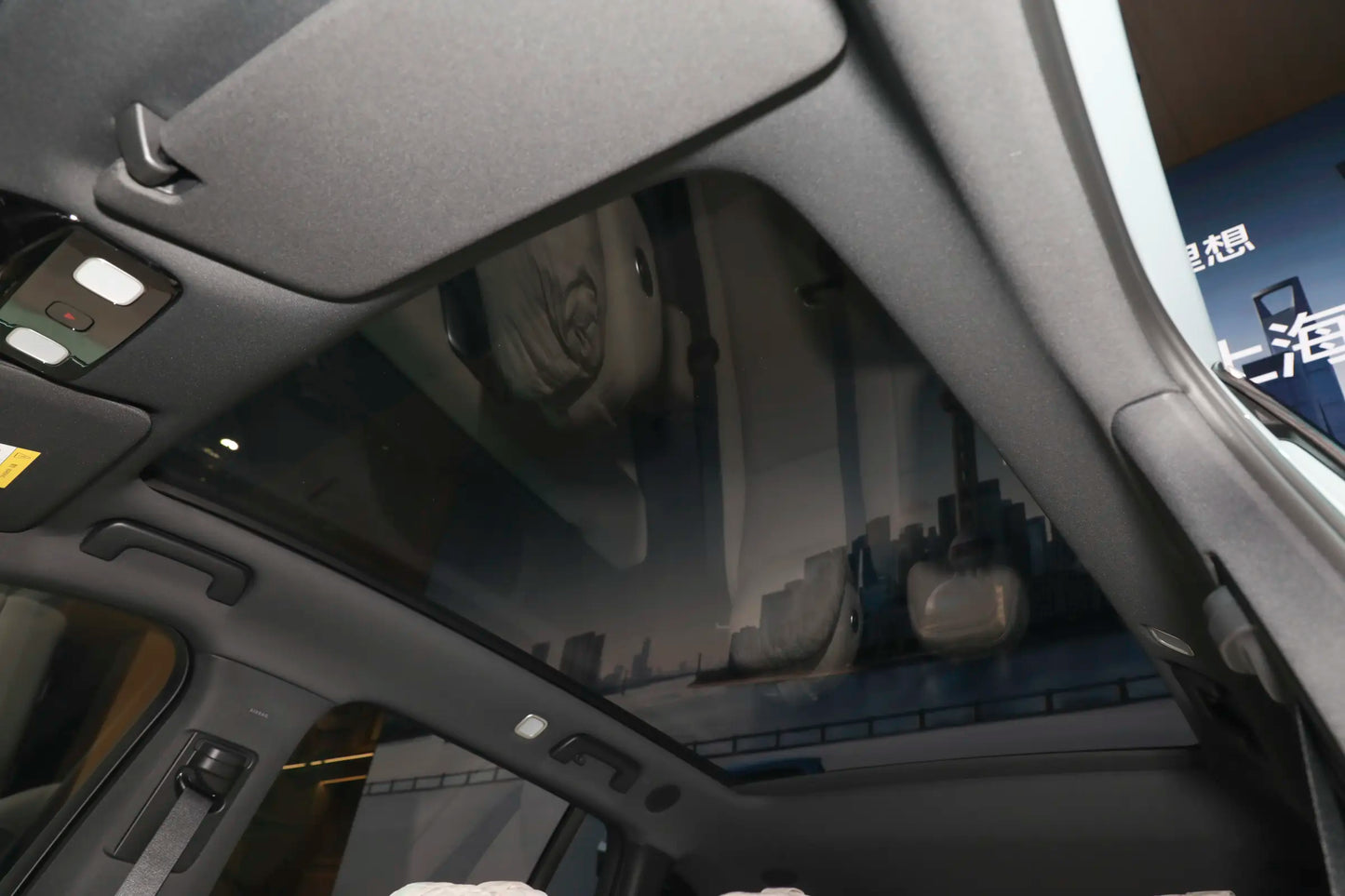
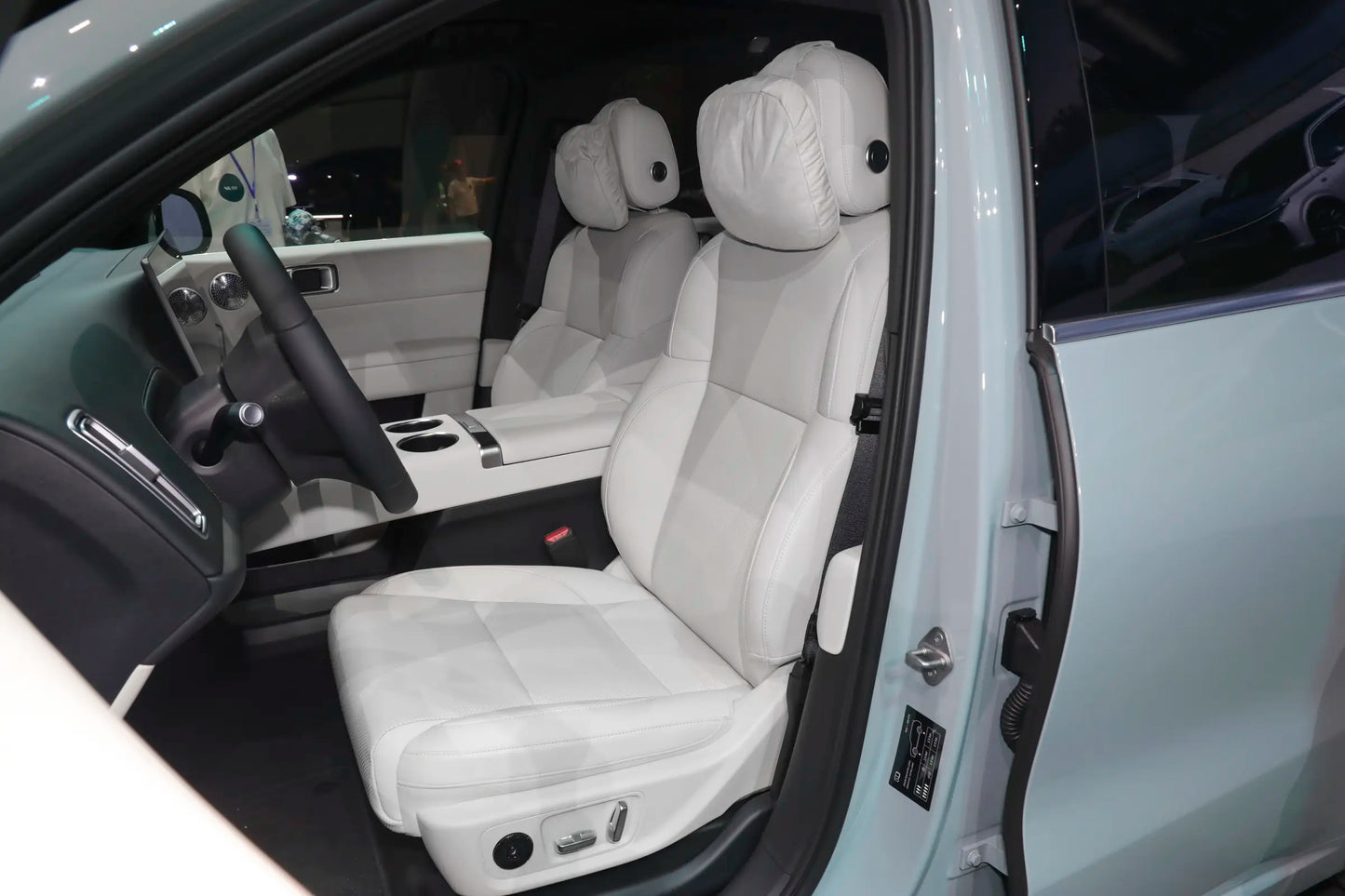
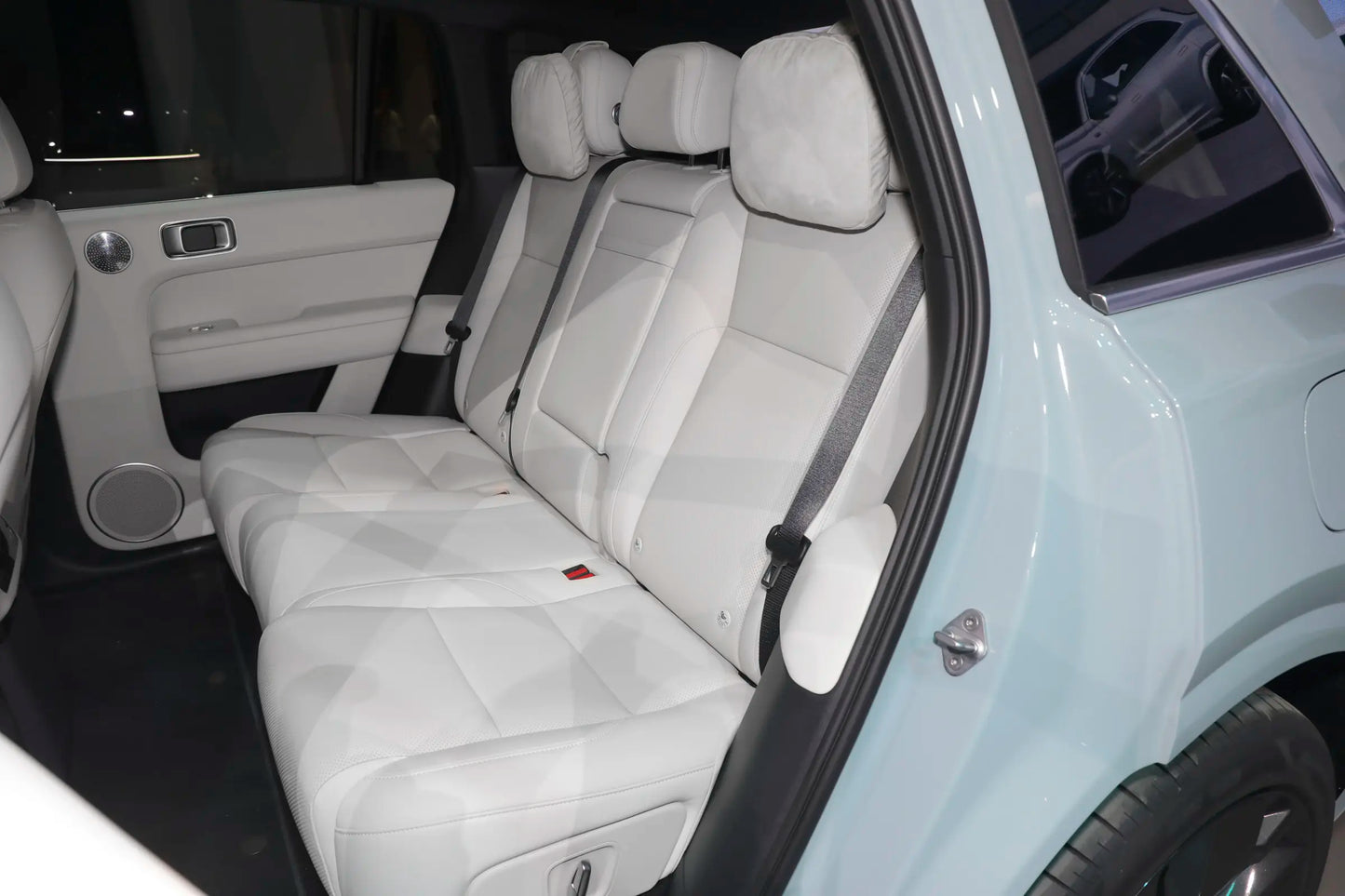
$35,432 USD
-
BrandLi Auto
-
Vechile ClassSUV
-
Energy TypeHybrid REEV
-
Pure Electric Range(KM)212
-
Curb Weight (kg)2330
-
Battery Typelithium iron phosphate battery
-
Total Power of Motor (KW)300
-
Maximum Power(KW)113
-
Total Torque of Motor(N・m)529
-
Maximum Torque(N・m)/
-
Length x Width x Height(mm)4925x1960x1735
-
Official 0-100km/h Acceleration Time(s)5.4
-
Power Consumption(kWh/100km)21.1
-
Equivalent Fuel Consumption (Electricity)(L/100km)2.39
-
Battery Capacity(kWh)36.8
-
MaximumSpeed(km/h)180
-
Motor Layoutfront-mounted +rear-mounted
-
Transmissionsingle-speed transmission
-
Displacement(L)1.5
-
Intake Typeturbocharging
-
IDre09003
Panoramic Interiors
Video Manual
Authentic on-site shots for an immersive vehicle detail experience
Real Customer Reviews
Source: DCAR
Review A
I've been watching the 2024 Li Auto L6 since I test-drove it, and finally made up my mind to order it in May this year when the 2025 Intelligent Refresh Edition just came out. Judging from nearly a year of sales and user feedback, there's a reason why the Li Auto L6 sits firmly at the top of the mid-to-large SUV sales charts. Its exterior is sleek with a high level of originality ¨C looking at the models on the street, most are starting to imitate Li Auto now. The interior is simple and elegant, and the ride comfort is top-notch. From picking up the car to driving it, the driving feel is great; the chassis is stable and doesn't shake much, which is way better than the Mazda I used to drive. Regarding energy consumption, after installing a home charging pile, I plug in the charging gun and schedule charging to start after 10 PM. Off-peak electricity costs just over 0.3 yuan per kWh, so a full charge costs about 10 yuan ¨C it's incredibly cost-effective, averaging just a few cents per kilometer. On a highway trip, the average fuel consumption was around 6.x L/100km, which is quite good for such a large car. The only slightly uncomfortable thing is that there's a "click" sound when the brake pedal rebounds after being released, but after getting used to it, I found that releasing the pedal slowly makes it better. All other aspects of quality are excellent.
Review B
I. Exterior Design: The Li Auto L series features the family's traditional "cookie-cutter" design. It has a handsome appearance with nice Star Ring headlights. I think many owners bought it for its looks. I'm a total fan of its appearance. Every time I wash the car and it's all clean, I can't help but look back a few more times and take some cool photos.
II. Interior: The new car still has a bit of a smell. When my friend just picked up the car, sitting in it made them feel a bit motion sick. Also, this automatic windshield wiper is really stupid. The detection for automatic first and second gears is very slow, and when switched to manual, it wipes too fast. I hope it can be adjusted later; it's really stupid.
III. Space: I'm 1.85 meters tall and weigh 220 jin. When I sit in the driver's seat of the Li Auto L6 and adjust the seat, the sitting posture is very comfortable. Unlike those compact SUVs, where my legs are cramped and uncomfortable. The space is large. When going on a trip, I take an official inflatable mattress, fold down the rear seats, and put the inflatable bed. However, the downside is that it's not completely flat, so I need to find a way to level it myself. I bought some things to level it. When I'm tired from driving while traveling, lying in the car to rest is quite nice.
IV. Configuration: Li Auto L6 Max version. Let me focus on the HUD. Li Auto's HUD UI design is very good; it can be said to be the domestic Apple.
V. Driving Experience: Compared to other older models in the lineup, the driving experience of the Li Auto L6 is quite good. The turning radius is relatively small. On those U-turn sections, the L6 can basically make it in one go, while the other larger models need to reverse once to get through. Compared to air suspension, the CDC shock absorbers reduce that "boat-like" dizziness a bit, but the comfort is somewhat worse than air suspension. Each has its own differences; choose whichever you like. With the release of this new version, Li Auto has re-tuned the chassis. The sport mode is relatively more stable, and the steering is more precise, unlike the previous wobbly feeling. It feels more solid to drive now.
VI. Range: Li Auto's pure electric battery is relatively small. The pure electric range, when I drive, since I'm more aggressive, is basically around 17-19 kWh per 100 km in summer. Because I usually have the sentry mode on, a lot of electricity is consumed by the sentry mode. Basically, after a full charge, I can drive about 100 kilometers. The range is still acceptable. With the range extender, I feel the range extender is relatively fuel-efficient. Of course, don't drive the car until it's out of electricity before using the range extender; that will definitely consume more fuel. Basically, driving on the highway at the 120 km/h speed limit, if you switch to hybrid mode before the battery is completely depleted, the fuel consumption is basically around 6-7 liters per 100 kilometers. So for such a heavy car, reaching this fuel consumption level is acceptable.
VII. Intelligence and Assisted Driving: When I switched from a fuel car, I was not used to it and needed to adapt slowly, but after adapting, it got much better. This is a family car; there's no aggressive driving, but the necessary power is still sufficient. You know about the power aspect; you may not use it, but you can't do without it. The 360-degree image is very easy to use after the upgrade. Narrow roads are no problem. I¹À¼Æ I can't do without the 360 now. Technology changes life. The NOA assisted driving, this intelligent assisted driving is still okay. It's just that the detection ability for small stone-like obstacles on the highway that are lower than the bumper needs to be improved; it will probably be improved later. Now I basically turn on the assisted driving when I get on the highway, so it's quite easy to use. I basically don't use assisted driving in the urban area because there are too many uncertainties in the urban area. Watching it drive in the urban area from a third-person perspective still makes me a bit nervous. So I basically use it on the highway. After all, it's relatively safe on the highway and can effectively reduce fatigued driving.
Review C
Personally, buying a car is like finding a partner. First, I look at the appearance, so I feel the same way about Li Auto. When the L series was first launched, I didn't like it, but as I saw more and more on the road, I gradually got used to it and liked it more and more. I would always take a second look when I saw one on the street, which laid the groundwork for my decisive purchase later.
¡¾Car Purchase Experience¡¿
I originally had a sedan, and the back seat was not small, but after installing a child seat, it became crowded. I considered the most popular BYD Tang and Toyota Highlander. After a comprehensive comparison, the Tang is pretty good, but it's a conventional SUV with a mediocre design and not a strong sense of technology. I wanted something new with a strong tech feel. The Highlander is decent in all aspects, but the configuration is too low; it lacks many features.
I drive a fuel-powered car and also have a pure electric vehicle, so I didn't want to consider pure fuel or pure electric again. That's one reason I chose an extended-range vehicle. Then there was the process of test driving, selling my old car, and ordering this one. I bought the Pro version, and I have mixed feelings of regret and satisfaction, about fifty-fifty.
¡¾Range and Energy Consumption¡¿
I picked up the car in November, winter, when the temperature was around minus 2 degrees. If the speed was around 70 km/h with the heater on, there was almost no range degradation, provided I didn't drive fast. Driving fast led to rapid degradation, especially in winter. By the summer of 2025, it was different. At the same speed with the air conditioning on, driving 50 km only reduced the range by about 45 km, which was pretty good.
As for highway range in winter, driving at 120 km/h on electricity resulted in a power consumption of 30 kWh, causing the range to drop quickly. Its standard range should be calculated based on around 20 kWh.
Here I want to talk about fuel consumption:
Before buying the car, I saw online that Li Auto uses 10 liters of fuel. I asked colleagues, and none of them reached 10 liters, which reassured me. I often drive from Beijing to Hengshui, and on the highway, I always use pure fuel at around 115 km/h, with an average fuel consumption of 7.5L. Once, in a hurry, I drove at 120-130 km/h, and it went up to 8.5L. Overall, I can accept the fuel consumption, considering the car is quite heavy.
If there's a lot of traffic jams, it's very fuel-efficient. During the May Day highway traffic jam, I drove for half a day with an average fuel consumption of 5.8L. Lower speed means better fuel efficiency. Another fuel-consuming scenario for extended-range vehicles is mountain roads. In June, I went to Fuping, Baoding, and there was a 40-km mountain road with continuous uphill. I used pure fuel at 30-40 km/h, resulting in a fuel consumption of 9.5L. Also, the large battery range dropped because uphill energy consumption is high. AͬÐÐ Highlander had over 10 liters at that time, but going downhill was comfortable¡ªconstant regenerative braking, no range drop, and almost no fuel consumption.
¡¾Space Performance¡¿
Very satisfied. The front seats are for me and my dad, the back seat has my son in a child seat, and my mom and wife don't feel crowded. That meets all my needs. The trunk is neither too big nor too small; items can't be stacked too high to prevent sliding forward during braking.
¡¾Smart Cockpit¡¿
Very satisfied, excellent. It understands all kinds of voice commands, while the "Xiaodu" on my family's electric car often doesn't. Now my son will call "Li Autoͬѧ" when getting in the car. Sometimes I rest in the car or work from home for meetings when the kids are noisy at home. The only downside is that the L6 doesn't have a 220V power outlet.
¡¾Assisted Driving¡¿
My car doesn't have a lidar. Initially, I had high expectations, but after several NOA misidentifications of construction zones, I got used to it. After all, it's just an assistant, and I still need to take control. I've switched automatic lane changes to manual. I usually use NOA on highways, cruising at 115 km/h in the leftmost lane, which is safe when not changing lanes. Sometimes on non-highway sections when answering calls, I let LCC assist briefly but not continuously. Overall, it's very convenient; after all, technology development takes time.
¡¾Charging Time¡¿
Slower in winter¡ª40-50 minutes when cold, but about half an hour in other seasons. On highways, if there's a vacant spot at a Li Auto charging station when I use the restroom, I plug it in, and by the time I'm done, it's almost charged.
¡¾Service Experience¡¿
Very satisfied with the delivery process¡ªone-stop service. I thought I had to handle temporary licenses myself, but it was all taken care of, which was a great experience. I also visited the after-sales service center once to check the left rear door handle's automatic pop-up issue. Although they spent an afternoon without finding the cause, they checked carefully with a good attitude.
¡¾Most Satisfying Aspects¡¿
Appearance, four-wheel drive, 5.4 seconds acceleration¡ªsimple and clear.
¡¾Reliability¡¿
I still have some concerns about reliability. Recently, many 2025 models have lower arm and steering noise issues, which is annoying. I worry mine might develop the same problem. I hope there will be a proper solution and that cost reduction can be balanced.
Summary:
1. Overall, I feel good.
2. Fuel and electricity consumption are acceptable.
3. I'm looking forward to the quality performance at 50,000 km, 100,000 km, and 150,000 km, but I still have some concerns.
4. Some minor flaws are understandable, but I hope the manufacturer will resolve them soon.
Competitive car pricing
Expedited delivery & freight
Mature auto supply chain
Third-party quality inspection
New & used cars available
Competitive car pricing
Expedited delivery & freight
Mature auto supply chain
Third-party quality inspection
New & used cars available
Competitive car pricing
Expedited delivery & freight
Mature auto supply chain
Third-party quality inspection
New & used cars available
Competitive car pricing
Expedited delivery & freight
Mature auto supply chain
Third-party quality inspection
New & used cars available
Competitive car pricing
Expedited delivery & freight
Mature auto supply chain
Third-party quality inspection
New & used cars available
Competitive car pricing
Expedited delivery & freight
Mature auto supply chain
Third-party quality inspection
New & used cars available
Competitive car pricing
Expedited delivery & freight
Mature auto supply chain
Third-party quality inspection
New & used cars available
Competitive car pricing
Expedited delivery & freight
Mature auto supply chain
Third-party quality inspection
New & used cars available
Competitive car pricing
Expedited delivery & freight
Mature auto supply chain
Third-party quality inspection
New & used cars available
Competitive car pricing
Expedited delivery & freight
Mature auto supply chain
Third-party quality inspection
New & used cars available
Competitive car pricing
Expedited delivery & freight
Mature auto supply chain
Third-party quality inspection
New & used cars available
Competitive car pricing
Expedited delivery & freight
Mature auto supply chain
Third-party quality inspection
New & used cars available
Competitive car pricing
Expedited delivery & freight
Mature auto supply chain
Third-party quality inspection
New & used cars available
Competitive car pricing
Expedited delivery & freight
Mature auto supply chain
Third-party quality inspection
New & used cars available
Competitive car pricing
Expedited delivery & freight
Mature auto supply chain
Third-party quality inspection
New & used cars available
Competitive car pricing
Expedited delivery & freight
Mature auto supply chain
Third-party quality inspection
New & used cars available

Who‘s ZEEX AUTO?
We have been deeply rooted in the Chinese automotive market for many years. We can help you find cheap cars (both new and used cars), and possess comprehensive compliance capabilities for automobile exports. If you wish to import a Chinese car, please feel free to contact us.









